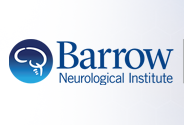Non-dystrophic myotonia: 2-year clinical and patient reported outcomes.
Document Type
Article
Abstract
INTRODUCTION/AIMS: Consistency of differences between non-dystrophic myotonias over time measured by standardized clinical/patient-reported outcomes is lacking. Evaluation of longitudinal data could establish clinically relevant endpoints for future research.
METHODS: Data from prospective observational study of 95 definite/clinically suspected non-dystrophic myotonia participants (six sites in the United States, United Kingdom, and Canada) between March 2006 and March 2009 were analyzed. Outcomes included: standardized symptom interview/exam, Short Form-36, Individualized Neuromuscular Quality of Life (INQoL), electrophysiological short/prolonged exercise tests, manual muscle testing, quantitative grip strength, modified get-up-and-go test. Patterns were assigned as described by Fournier et al. Comparisons were restricted to confirmed sodium channelopathies (SCN4A, baseline, year 1, year 2: n = 34, 19, 13), chloride channelopathies (CLCN1, n = 32, 26, 18), and myotonic dystrophy type 2 (DM2, n = 9, 6, 2).
RESULTS: Muscle stiffness was the most frequent symptom over time (54.7%-64.7%). Eyelid myotonia and paradoxical handgrip/eyelid myotonia were more frequent in SCN4A. Grip strength and combined manual muscle testing remained stable. Modified get-up-and-go showed less warm up in SCN4A but remained stable. Median post short exercise decrement was stable, except for SCN4A (baseline to year 2 decrement difference 16.6% [Q1, Q3: 9.5, 39.2]). Fournier patterns type 2 (CLCN1) and 1 (SCN4A) were most specific; 40.4% of participants had a change in pattern over time. INQoL showed higher impact for SCN4A and DM2 with scores stable over time.
DISCUSSION: Symptom frequency and clinical outcome assessments were stable with defined variability in myotonia measures supporting trial designs like cross over or combined n-of-1 as important for rare disorders.
Medical Subject Headings
Channelopathies; Chloride Channels; Hand Strength; Humans; Mutation; Myotonia; Myotonia Congenita; Myotonic Dystrophy; NAV1.4 Voltage-Gated Sodium Channel; Patient Reported Outcome Measures; Quality of Life
Publication Date
8-1-2022
Publication Title
Muscle & nerve
ISSN
1097-4598
Volume
66
Issue
2
First Page
148
Last Page
158
PubMed ID
35644941
Digital Object Identifier (DOI)
10.1002/mus.27649
Recommended Citation
Fullam, Timothy; Chandrashekhar, Swathy; Farmakidis, Constantine; Jawdat, Omar; Pasnoor, Mamatha; Dimachkie, Mazen M; and Statland, Jeffrey M, "Non-dystrophic myotonia: 2-year clinical and patient reported outcomes." (2022). Neurology. 1997.
https://scholar.barrowneuro.org/neurology/1997


